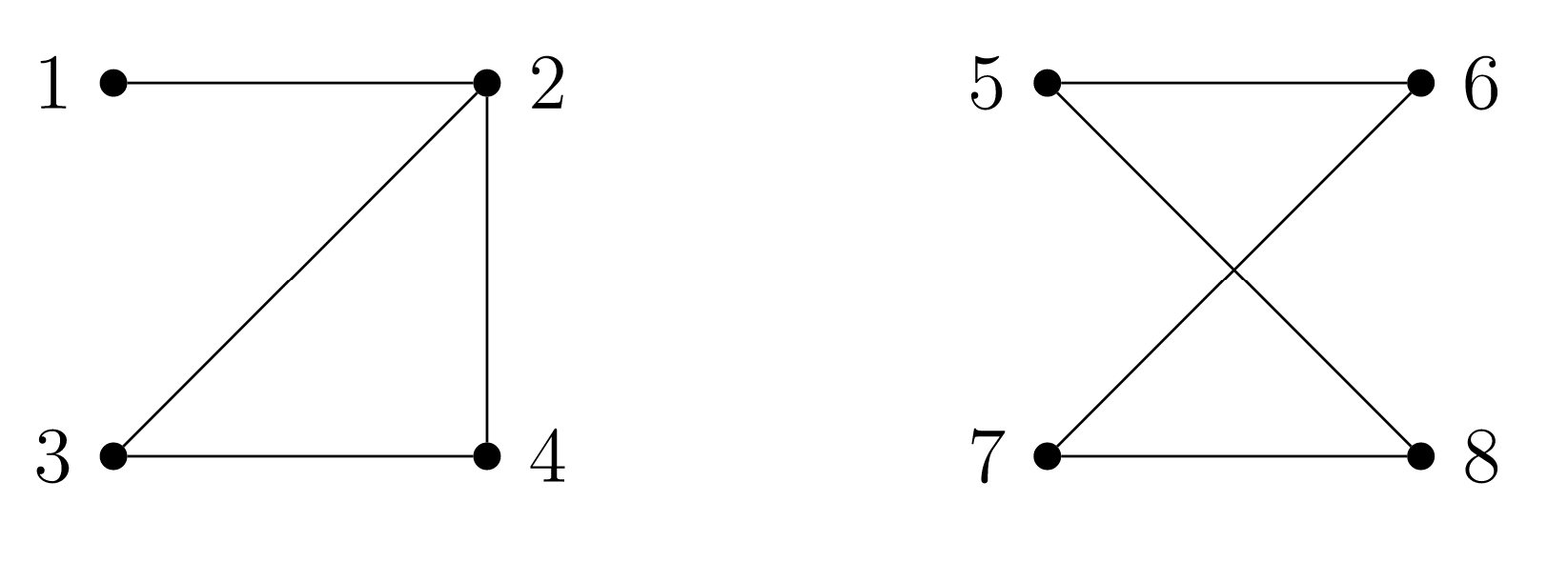15.5: Activities
( \newcommand{\kernel}{\mathrm{null}\,}\)
In each of the following, devise a graph that contains the requested type of walk. (You do not need to create one graph that contains all three types of walks; you may draw three separate graphs.)
- A closed path that is not a trail.
- An open trail that is not a path.
- A closed trail that is not a path.
Devise a graph with exactly four vertices, each of which has degree
- nonconnected.
- connected.
In each of the following, devise a connected graph with at least five vertices that has the requested properties. Do so without looking at the example graphs in this chapter. (You do not need to create one graph that contains all of the properties; you may draw a separate graph for each task below.)
- Contains a bridge.
- Every edge is a bridge.
- Contains an articulation vertex.
- Every vertex of degree at least
Does increasing the number of edges in a graph increase its edge connectivity?

In the graph of Figure
Suppose
What does being maximal with respect to these properties imply about
An Euler circuit is a closed trail in a connected graph G that traverses every edge of G. Since it must be a trail, you could say that an Euler circuit traverses each edge of G exactly once (as well as ending at the same node at which it begins).
Prove that if a connected graph contains an Euler circuit, then every vertex in that graph must have even degree.



